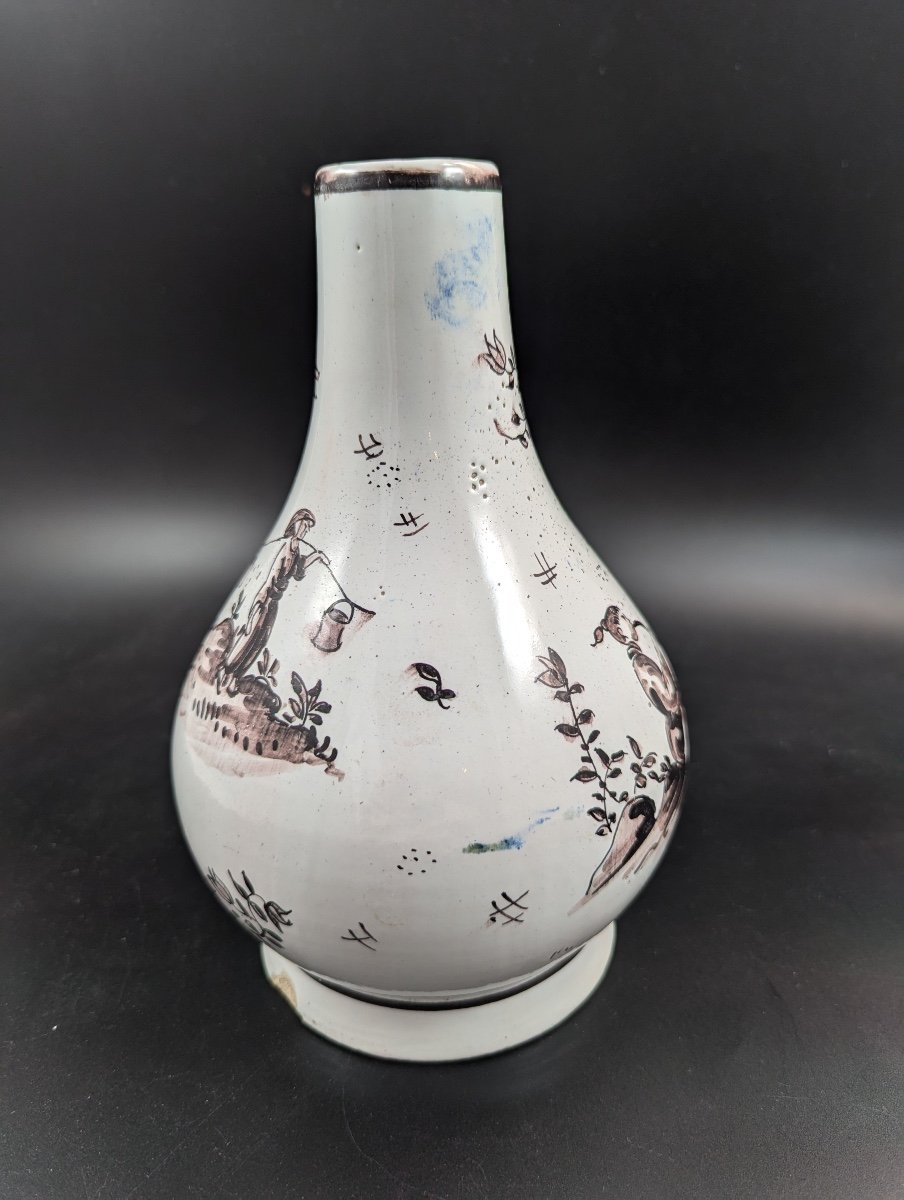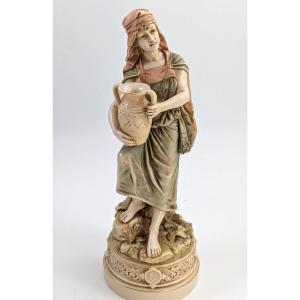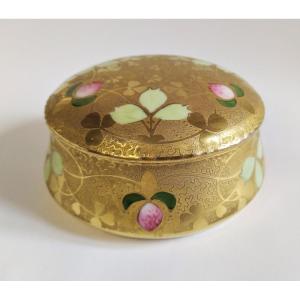A pear-shaped faience vase, decorated in black and brown on a white background with Chinoiserie-style pictures. Hand-painted images depict three Chinese figures: one smoking a long pipe with smoke rising up, another carrying two buckets of water on a balance beam, and a woman holding something. The landscape is represented by a few rocks and bushes with scattered tree branches. Black spots and dots on the body of the vase are peculiarities of the technological process of glazing during the manufacture of the piece.
The first ships carrying Chinese porcelain arrived in the Netherlands around 1600. The new luxury pottery was very popular, and makers in Delft soon started trying to develop a good imitation. The Chinese porcelain was made of very fine white clay known as kaolin, but that was not available in the Netherlands. So to make 'Hollants porceleyn' (Dutch porcelain), the potters in Delft used tin glaze – an opaque white glaze containing tin oxide. This technique was used in Delft until around 1850. That is why objects made between 1620 and 1850 are known as antique Delftware. After 1850, Delftware was made using another technique and is known as modern Delftware.
Delftware was made using clay that turned yellow when fired. It was then dipped in a bath of white, opaque tin glaze to cover it completely. The earthenware objects were fired at around 1000 degrees Celsius. This was not enough to fuse the clay and the glaze completely, so the glaze could easily flake off. This caused slight damage, where the yellow of the clay can often be seen. This is a good way of identifying antique Delftware.
Dutch Delftware might have a mark – but not necessarily. Only a few of the maker's marks have ever been officially recorded, and at least half the antique Delftware made never had a mark. Surviving ledgers of Delft potteries show that their products were sold to neighboring countries, and also to Denmark, Poland, and even as far afield as Curacao and Boston. Soy sauce from Japan was, for example, packed in Delftware bottles. It is therefore no wonder that Dutch Delftware is found in museum and private collections the world over.
Dimensions:
Height: 22.5 cm
Diameter: 14.3 cm
Weight: 943 grams
Condition:
Chip on the bottom rim, drilled hole in the lower part, two small traces of blue paint in some places. Scuffing of brown paint on the upper rim. Traces of firing in some places. Otherwise, excellent antique condition consistent with age.
Please study the accompanying photographs carefully as they form an integral part of this description. The item will be shipped with full tracking and insurance. It is important to note that shipping costs include labor, packaging, and postage.


















































 Le Magazine de PROANTIC
Le Magazine de PROANTIC TRÉSORS Magazine
TRÉSORS Magazine Rivista Artiquariato
Rivista Artiquariato